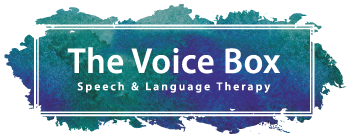Voice Health & Voice disorders
Regain control over your voice.
Develop a stronger, more authentic voice.
Say goodbye to vocal fatigue, strain and pain.
We are dedicated to assisting you in optimizing your voice potential. Curious about what to expect during a voice evaluation? Allow us to shed some light on the process. Our highly skilled speech-language pathologists will conduct a comprehensive assessment to gain insights into the unique characteristics of your voice and identify any areas that may require targeted intervention.
During the evaluation, we’ll dive into the nitty-gritty of your voice. We’ll ask you to speak, sing, and even make silly sounds (yes, we’re giving you permission to get a little goofy!). We’ll analyze the quality, pitch, volume, and clarity of your voice. Don’t worry, we won’t be judging your singing skills like on a reality TV show. Instead, we’re here to celebrate your voice’s strengths and identify areas where we can work together to make improvements.
Now, let’s talk about voice therapy, where the real magic happens! Consider it a collaborative journey towards vocal refinement. Our experienced therapists will customize a therapeutic plan, offering a repertoire of evidence-based exercises, techniques, and strategies tailored to your unique needs. Through targeted intervention, we aim to enhance vocal strength, flexibility, and control, enabling you to achieve optimal vocal function and achieve your communication goals.
Throughout your voice therapy experience, we strive to create a supportive and professional environment. While our approach is rooted in expertise and clinical rigor, we understand the importance of fostering an atmosphere that encourages your active participation. Our goal is to empower you, boost your confidence, and help you find joy in expressing yourself. So, get ready to unleash your voice’s superpowers and discover the amazing things it can do. Together, we’ll create a voice that truly reflects the awesome person you are!
What is a voice disorder? A voice disorder refers to any condition or disruption that affects the production, quality, or control of one’s voice. It can manifest in various ways, leading to abnormalities or limitations in vocal pitch, loudness, resonance, or overall vocal clarity. Voice disorders can result from a range of causes, such as vocal cord nodules or polyps, laryngitis, muscle tension dysphonia, neurological conditions, or vocal misuse/abuse. Individuals with voice disorders may experience symptoms such as hoarseness, vocal fatigue, breathiness, or voice breaks. These conditions can significantly impact communication, social interactions, and professional activities, often requiring medical intervention, therapy, or vocal training to improve voice function and restore effective vocal communication.
Here are just a few examples of voice disorders. There are several other conditions that can affect the voice, each with its own unique characteristics and treatment approaches.
Vocal Cord Nodules: Vocal cord nodules are small, callous-like growths that develop on the vocal cords due to vocal misuse or overuse. They typically result from excessive vocal strain or incorrect vocal techniques, causing hoarseness, a rough voice, and difficulty in producing clear sounds.
Spasmodic Dysphonia: Spasmodic dysphonia is a neurological voice disorder characterized by involuntary spasms or contractions of the vocal cords. It leads to a strained or strangled-sounding voice, with intermittent breaks or pauses during speech. This disorder can significantly affect speech intelligibility and may cause social and professional challenges.
Muscle Tension Dysphonia: Muscle tension dysphonia (MTD) is a voice disorder characterized by excessive tension or misuse of the muscles involved in voice production. It often results from vocal strain, stress, or poor vocal habits. MTD can cause a strained, effortful voice quality, vocal fatigue, and difficulties with pitch and vocal range.
Now let’s explore some treatment approaches which are used to address these voice disorders.
For Vocal Cord Nodules
- Vocal Hygiene Education: Voice therapy may include educating individuals about proper vocal hygiene practices, such as avoiding vocal strain, staying hydrated, and incorporating vocal rest periods.
- Vocal Technique Training: Voice therapists can provide techniques to promote healthy vocal production, including breath support exercises, vocal warm-ups, and proper speaking or singing techniques.
- Voice Amplification: In some cases, voice therapy may involve using amplification devices or strategies to reduce vocal strain and ensure that the voice is heard clearly without excessive effort.
For Spasmodic Dysphonia
- Vocal Relaxation Techniques: Voice therapy may focus on relaxation exercises to reduce muscle tension and spasms in the vocal cords. These can include techniques like laryngeal massage, stretching, and specific relaxation exercises for the muscles involved in voice production.
- Voice Therapy Techniques: Certain speech techniques, such as gentle onset, prolongation of speech sounds, and altered voice approaches, may be used to minimize the impact of spasms and improve overall vocal control and clarity.
- Breathing and Support Training: Learning proper breathing techniques and developing good breath support can help manage the symptoms of spasmodic dysphonia and improve voice stability.
For Muscle Tension Dysphonia
- Vocal Relaxation and Resonance Techniques: Voice therapy can include exercises to release tension in the vocal muscles and promote more relaxed and resonant voice production. These may involve specific relaxation techniques, resonant voice exercises, and vocal tract posture adjustments.
- Vocal Behavior Modification: Voice therapists can work with individuals to identify and modify vocal behaviors that contribute to muscle tension dysphonia. This can involve addressing vocal misuse, reducing excessive vocal effort, and promoting healthy vocal habits.
- Cognitive-Behavioral Approaches: Some voice therapy approaches may incorporate cognitive-behavioral techniques to address underlying emotional or psychological factors that contribute to muscle tension dysphonia. These techniques can help individuals manage stress, anxiety, or other emotional triggers that affect their voice.
It’s important to note that voice therapy techniques can vary depending on the individual’s specific needs and the guidance of a qualified speech-language pathologist or voice therapist.





